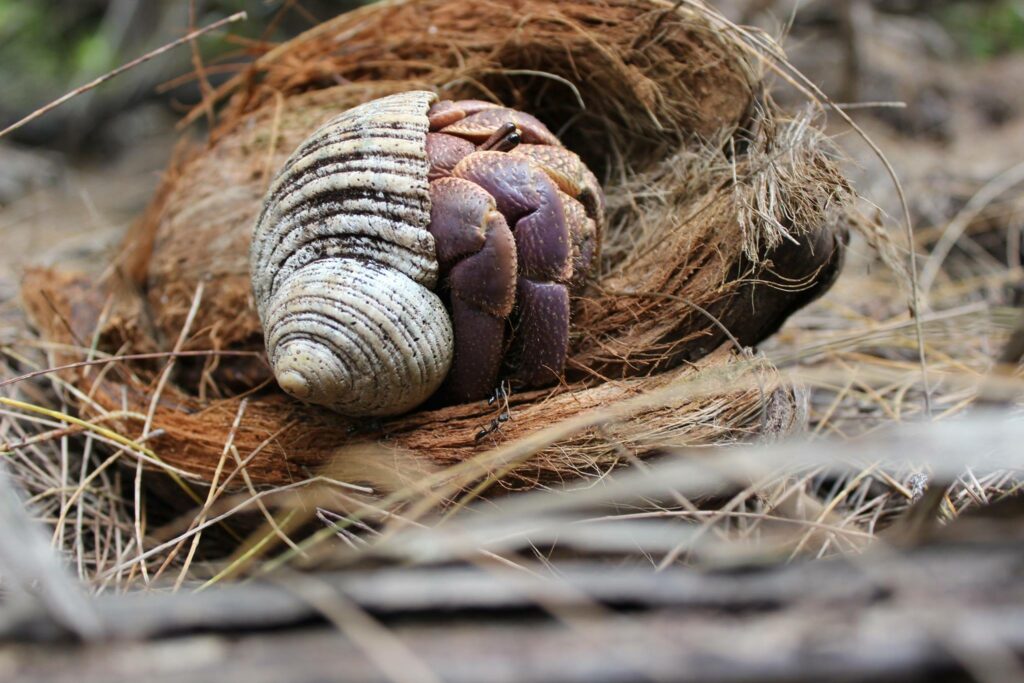
Månha Titiyas
Territory: Guam
Author: Maria Hernandez
Recipe: In Guåhan, this coconut crepe is the perfect dish to bring to a gathering or as a gift when you’re visiting a friend or elder. It’s also an easy enough recipe to teach a neni (child) who wants to try their hand in the kitchen.
Maria
I am the sacred, lush jungles and healing waters of Guahan in the Mariånas archipelago. My name Guåhan means “we have,” and abundance is my birthright. I have so much to give; fertile land for farming, sunsets like paintings, coastlines brimming with tropical fish that have sustained generations of families, and the largest freshwater aquifer in the Mariana Islands. For thousands of years, people have thrived and found refuge on my land. My daughter Maria Hernandez May is passionate about protecting me from the many threats I currently face stemming from colonialism and hyper militarization. Maria often walks along the shoreline of an ancient village Litekyan on my northern coast, praying to her ancestors to guide her; to provide divine protection and wisdom that will help halt a US military mega-buildup clearing more than a thousand acres of limestone forest for military base parking lots and firing ranges. She is one of many of my native children who does what she can to live in harmony with the land, and honor her sacred obligation to preserve and defend her motherland.

Recipe Name:Månha Titiyas
In Guåhan, this coconut crepe is the perfect dish to bring to a gathering or as a gift when you’re visiting a friend or elder. It’s also an easy enough recipe to teach a neni (child) who wants to try their hand in the kitchen. When I make this recipe, I gather the young green coconuts from trees around my home in the village of Inarajan and scoop out the sweet tender meat. I then pour out the sweet water into a cup. You can tell a coconut is at the perfect ripeness for this recipe when it is green, hardly bruised, and about the size of a football. If it’s any smaller, it’s likely too young and water still very tart. If they’re brown and mature, the meat will be too hard for this recipe. You can use the brown, mature coconuts to make the coconut milk if you wish!
In modern times, even here in Guahan, we often find ourselves in supermarkets buying our coconuts. One of the reasons we resort to doing this is because invasive rhino beetles are decimating our coconut trees here. Luckily, in my village, I still am surrounded by healthy trees and am able to harvest coconuts. Another reason is because it’s just more convenient to pay for one at the store. If you have coconut trees around you and choose to make this recipe, I invite you to connect with the land and pick some from your local trees.
Fresh coconut meat and coconut water in this recipe make a big difference and give the crepe a fuller taste. Fresh coconut milk and homemade vanilla extract go a long way too and they’re both pretty easy to make. If you want to go the extra mile, you can also collect ocean water and boil it down into sea salt. By the end of this recipe, I hope you not only have a new månnge’ (delicious) favorite treat, but also connect with the land in one or more meaningful ways in the process. Enjoy!
1 cup sweet Manha (Young Coconut)
1/4 cup sweet Manha Juice
1/2 cup Coconut Milk
1 tsp Vanilla Extract
1 1/4 cup All-purpose Flour
1/2 cup Cane Sugar
1/4 cup Tapioca Flour
2 tbsp Butter (for pan)
A pinch of sea salt
Process:
Prepare the Dough:
● Mix chopped manha (young coconut), young coconut juice, coconut milk, vanilla extract and cane sugar together in a mixing bowl. Add the all-purpose flour, tapioca flour, and pinch of salt with the wet ingredients, mixing thoroughly until the consistency is slightly thicker than pancake batter.
Shape the Titiyas:
● Heat the butter in your pan. Grab two parchment papers and pour 1/4 cup of the batter between the papers.
Cook the batter:
● Heat the butter in your pan. Once the oil is hot, carefully slide the parchment paper onto the pan and cook until they turn are more solid and turn golden brown and slightly crispy.
● Cool and eat!
Remove the cooked tatiyas and place on paper towels to remove excess oil. Let them cool completely and they’re ready to eat. Enjoy!!
